Articles
Show All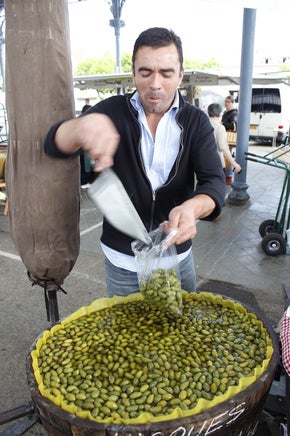
Olives / Aperos
Thinking of French food, of the many ingredients that come to mind, olives are not too far down the list, which is interesting, given that the quantity of olives grown in France does not rate a mention on the International Olive Council’s list of producing countries. Olives are synonymous with Provence and the Mediterranean, but less than 1% of olives grown worldwide come from France.
1 comment
Duck
Here in south west France, on the tables of Gascony, le canard reigns supreme. In part that’s due to the French folks love of foie gras, as once the foie is removed, the cook has the whole bird at their disposal. In times past the whole duck was confit - cooked in its own juices before being preserved under a layer of duck fat. Now, most duck confit is prepared from the leg and thigh portion, while the breast has been exalted to steak status, all due to a local chef caught short with no food to serve.
1 comment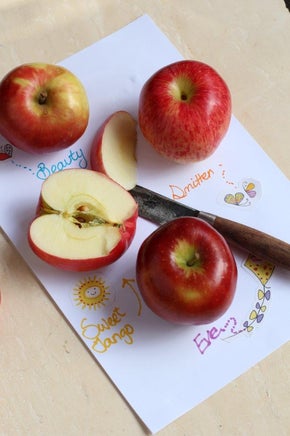
The Big Apple
As legends go, the apple appears regularly and it’s often associated with sex! It got Adam and Eve into all sorts of trouble, was considered an aphrodisiac for the Romans and Greeks and a symbol of fertility for the Celts!
When talking apples, New Zealand is considered a world power on creating new breeds . This season look for these new varieties.
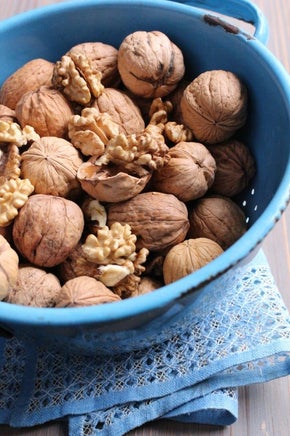
Gone Nuts!
A number of nuts are prized for their flavour as oils, many of which will be stronger if the nuts have been toasted before pressing to obtain the oil.
Expensive nut oils include walnut, hazelnut, almond, and macadamia nut, all of which are usually cold pressed.
Less expensive nut oils such as peanut and coconut oil can be cold pressed or solvent extracted - these may be sub-labelled as refined oils.
Nut oils are more vulnerable to becoming oxidised or “off”, so once opened they should be kept refrigerated. They are also affected by light and heat, so look for nut oils sold in coloured bottles and check the long expiry date as this is a marker of freshness for you.
Due to their cost, use sparingly where flavour matters.
1 comment
A Grain of Salt
Salt seasons and preserves our food, but too much will ruin it. In recent years salt has gone from hum-drum finely milled table salt to flakes of finesse, so, what’s the difference?
There are three basic methods of salt production each used from ancient times.
1 comment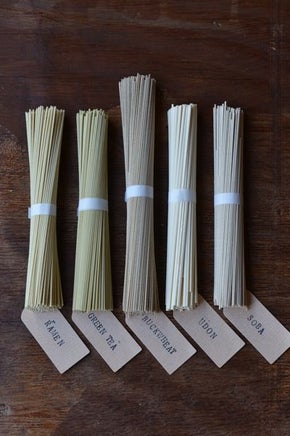
Japanese Noodles
Japanese noodles have slipped into kiwi cuisine with ease, their chewy texture, so different from pasta or egg noodles and their flavours which vary widely between the different types – soba, udon, ramen, somen or cha soba have become pantry staples for many. Noodles are low in salt and fat and high in complex carbohydrates.
In Japan menrui is the collective name given for noodles; when a particular style of noodle is being referred to, it is shortened to men; hence ramen and somen. Their history dates way back to the 700sAD and the original menrui were more like sweet dumplings. Culinary evolution was gradual until dumplings became noodles. Unlike China, noodles in Japan have never been made from rice, rather buckwheat, which grew in cold climates where rice could not, and more recently wheat.
In Japan noodles are the ultimate in fast food, being served simply freshly steamed, swimming in a fragrant broth, or cold as a salad and often as a snack. For convenience they come dry, cooked and long-life packaged, or cooked and fresh chilled, the last two only requiring re-heating.
1 comment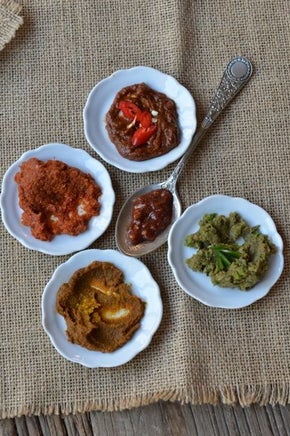
Thai Curry Pastes
Unlike many Asian counties Thailand's cuisine has not be influenced by westerners - it's the only SE Asian country to have not been colonized. In addition Thailand's geography featuring long coastlines, mountains, drylands and lush pastures intertwined with many rivers has given rise to a truly diverse cuisine. The colourful curry pastes in Thailand's food cabinet are a lively combination of spices, herbs and flavourings, though all include chillies. Yes you can make them from scratch but finding a favourite brand, will quickly and easily transform simple ingredients into spectacular dishes. Here's quick overview
1 comment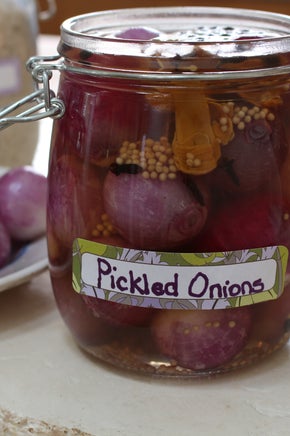
Get Pickled on Onions
Crunchy, sweet, sharp and spicy, pickled onions, once the mainstay of the summer picnic table, can have a new twist when you make them with baby red onions.
Pickled foods, such as pickled onions, gherkins or garlic are preserved when surrounded in a bath of acid , in this case vinegar, which discourages microbial (nasties)growth. The pickling liquid can be straight out vinegar - malt, cider, apple or fruit vinegar, or it can be spiced ad flavoured using whole spices. Ground spices will make the vinegar cloudy and give a dusty paste-like feel in the mouth when being eaten.
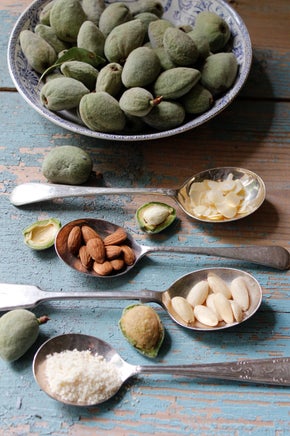
Going Nutty
I cannot roast almonds without being reminded of my days as an apprentice in the bakery kitchen, when each morning students were expected to begin the day making praline (almonds cooked with sugar until toffee-coated, cooled and ground) ready for decorating the cakes later that day. As a kid, nuts came as peanuts or almonds, the choice being somewhat limited then, but nowadays there’s a considerable variety of nuts available to add texture, taste and nutrition to more than just baking. Here’s the low down and some great ways to nuts this summer.
1 comment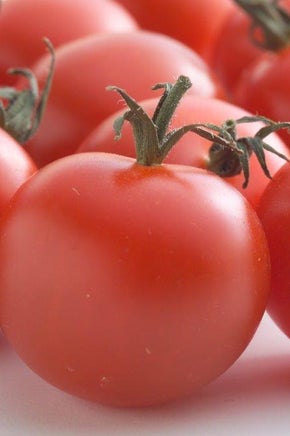
Tomato Time
Knowledge is knowing the tomato is a fruit,
Wisdom is knowing not to put it is a fruit salad!
Tomatoes are our number one selling vegetable, even though technically tomatoes are a fruit. The French call them “apples of love”, which may have come from an early reputation as an aphrodisiac. The tomato’s history is a culinary legend full of tales of intrepid travel and suspicion about its safety.
They came to Spain from Mexico in the early part of the 16th century and in the early days there was a suspicion in Europe that tomatoes - members of the Solanceae or nightshade family - were poisonous, and they were grown as a decorative garden plant but not eaten.
The earliest known printed recipe was in an Italian book in the mid 17th century for Tomato Sauce, Spanish style, and who can imagine Italian food today without tomatoes, or for that matter a kiwi summer salad without a tomato gracing the table. The decision though, is which to choose?
New Zealand tomatoes are mostly ripened on the vine, giving them more flavour even if something is used to speed up the ripening of the crop at the end while still on the vine. Truss or vine tomatoes also come in a range of varieties and sizes and should have a more intense flavour.
1 comment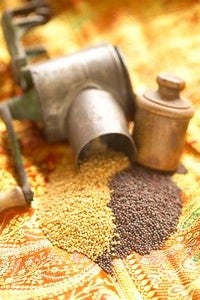
Magic Mustard
From warm and mellow to pungent and piquant, mustard is one of our oldest spices - outdated peppercorns - its name a reference to Anglo-Saxon times, must , unfermented grape juice and arden meaning hot or fiery. Only the seeds whole or crushed were once used, the vibrant yellow powder and prepared mustard not common until much later.
Given the three types of seeds - white, brown and black - once grew in different areas of the world (they grew wild in different climates then ), mustard has been, and is still in many cases, an essential spice in many different countries over and above Britain with its roast beef . It is used - spicing gravlax and pickling herrings in Northern Europe, flavouring sausages in Germany and adding fire to Indian curries before chilli’s arrival.
Today
mustard is grown in most temperate climates - Canada being the largest
supplier - and multiple
condiment-like variations are made from
the hard-shelled, sinus-clearing seed is incredibly numerous. Given this, mustard
is often over looked for the trendier pestos and pickles, when it can so easily
add oomph and flavour to our everyday cooking and food.
Are
you a bit confused between Dijon and French, Meaux and Mild English? While there’s
plethora of brands each with their own recipe and style, here’s a basic overview of the differences -
and it’s a good idea to keep a couple of styles in your pantry; mustard is wonderfully versatile.
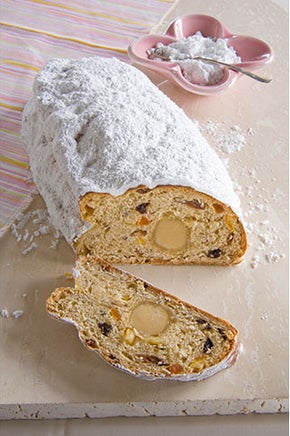
Christmas Celebration
With just over one month until Christmas, it’s time to gear up to all things Christmas, and if like me, you like to bake up memories in the form of Christmas cakes, mince tarts, biscuits or fruit bread, then now’s the time to plan and get mixing. Do not allow the panic of having to have tins full at Christmas get in the way of fun; make just one or two special things that will help create wonderful memories for family and friends.
1 comment


